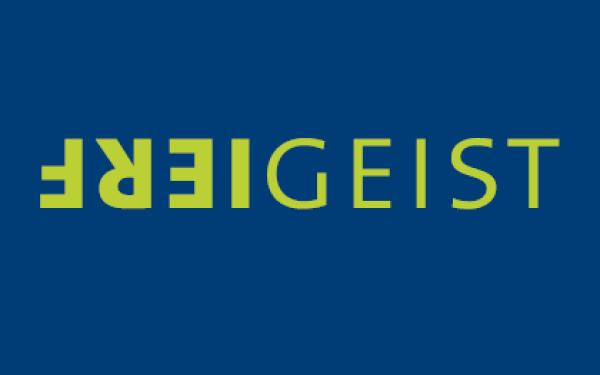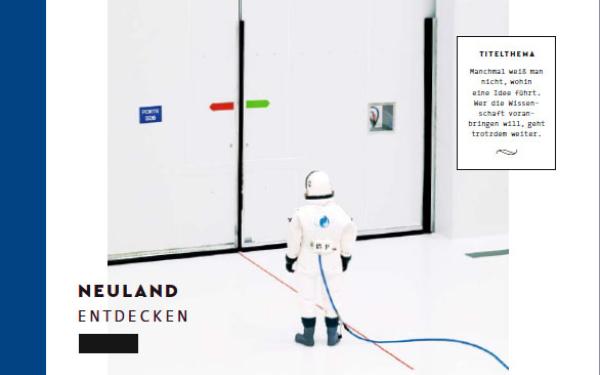
Martin Bühler für VolkswagenStiftung
Using Light to Steer Microparticles Through Liquids
"Like a license to tinker around": Freigeist Fellow Juliane Simmchen explores how to move the tiniest particles in liquids. One goal: to remove pollutants from water or to specifically target the transportation of drugs through the body.
Human swimmers propel themselves through the water with powerful strokes of the arms and legs. A stroke is followed by the gliding phase, in which the body advances further according to the principle of inertia. In the microworld, however, no such gliding can take place. For a water flea, for example, the water feels something like thick honey: Its body mass is so small. If it wants to move, it has to paddle, and as soon as it stops paddling, it stops.
Juliane Simmchen is an expert on such movements in the microworld. As a chemist, however, she is not concerned with aquatic life. Rather, she is fascinated by the question of how inanimate particles can be purposefully steered through liquids "under their own power". This is a singular notion: We usually think that particles suspended in liquid will float around each other chaotically, rather like the loose white particles in a snow globe which, when shaken, creates the appearance of a snowstorm. Juliane Simmchen, however, wants to teach particles to swim together – and that in a predetermined direction. This very different picture to the snow globe effect has its roots in an unusual research idea.
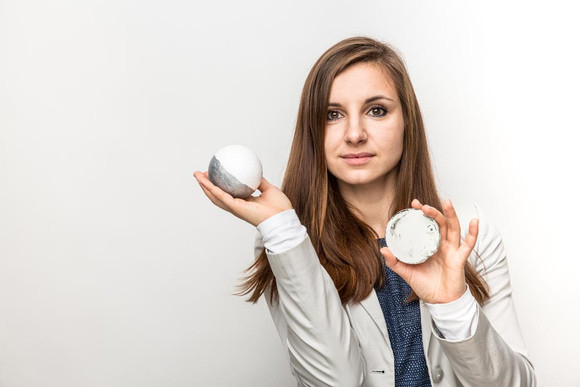
Freigeist-Fellow Dr. Juliane Simmchen.
Videointerview: Juliane Simmchen explains her project (in German)
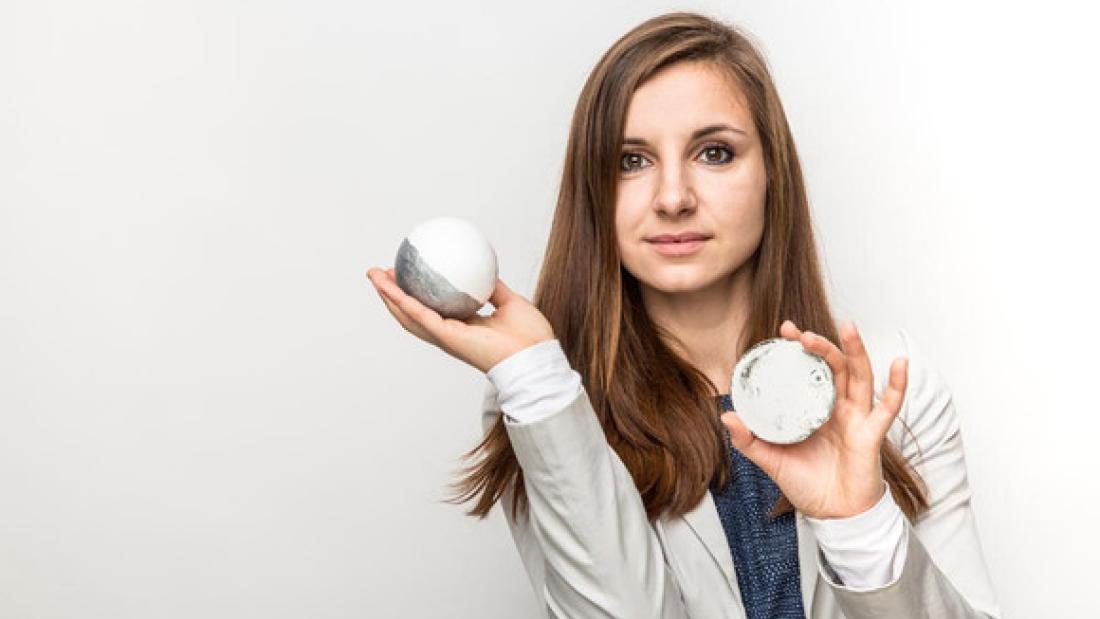
Permanent power supply needed
"Of course, microparticles can only move through liquids if they are permanently supplied with energy," says the 32-year-old researcher, who for her Freigeist project "Photocatalytic Processes for Micromotion and Analytic Purposes - PHOTOLYTICS" set up a junior research group in physical chemistry at the Technical University of Dresden.
The particles need some kind of 'motor' to keep them moving.
"The particles need some kind of ‘motor’ to keep them moving." And this is what she is working on together with her team. Her central test objects are particles made of plastic, platinum and other materials with a size of just a few micrometers.
"Janus particles" simultaneously enable drive and function
Especially interesting for the group are the so-called Janus particles. Like a Janus head, these have two different sides: One is coated with a catalytically active layer, the other remains untreated. The drive works as follows: When light falls onto the catalytically active side, the coating is subjected to energetic excitation. This triggers chemical reactions with molecules from the liquid on the surface of the particle. Finally, the newly formed molecules accumulate in the water on the coated side of the Janus particle. This slowly leads to a difference in concentration between the two sides of the Janus particle – a so-called gradient. And this gradient causes the particle to start moving by itself, a phenomenon known as self-diffusiophoresis.
New "fuels" for the movement in the micro world
Juliane Simmchen wants to gain a detailed understanding of such processes in order to develop new "fuels" and better control over this movement. She works together with physicists from other research institutions who simulate the processes on the computer.
Actually, our work has a lot to do with tinkering around
For all the theory, our chemist has clear applications in mind: It is conceivable, for instance, that such particles could be used to specifically target and fish out pollutants from a liquid and transport them away. And it is possible that in the future other particles might be used to direct drugs through the body to a tumor.
Juliane Simmchen's multidisciplinary team also includes biologists. The biologists focus their attention on natural "motors" such as bacteria that move by means of their small flagella tails. Simmchen believes it is quite possible that these biotransporters will in future pull particles behind them like pack donkeys. "Actually, our work has a lot to do with tinkering around," she says, "we are constantly trying out new ideas, and in some cases we have to build the experimental equipment on our own." For example, a machine that can produce differently shaped plastic particles made of polystyrene. These play a role in their experiments because how the "crumbs" move depends on their shape. "Once you’ve seen the experiments and what we’re working on, you get an understanding of what motivates me and my group.
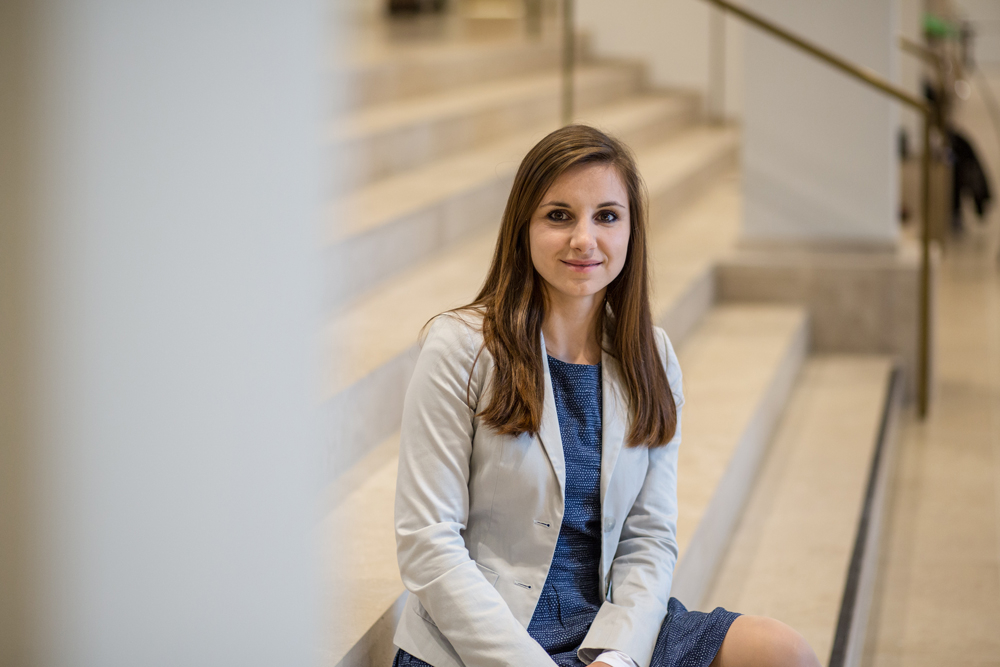
Juliane Simmchen installs her international team at the TU Dresden.
It's a bit like playing computer games in the lab, just cooler.
It's just totally fascinating. You can view the tiniest things through the microscope. What’s more, you can even influence their behavior – it's a bit like playing computer games in the lab, just cooler."
Fellowship helped with the difficult first step
Juliane Simmchen studied analytical chemistry and during her doctorate she worked in materials science. As a postdoctoral fellow at the Max Planck Institute for Intelligent Systems in Stuttgart, she focused on the environmental impact on particle motion. Although still an early career researcher, she brings a whole bunch of experience to her current research. The support she receives as a Freigeist Fellow helped her to take the difficult first step: "Bringing the unusual idea to fruition and planning its concrete implementation – that's already been done. What must follow now is diligence and hard work – for me as a scientist, the prerequisites for success."

